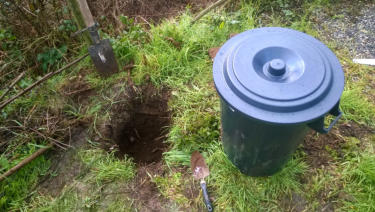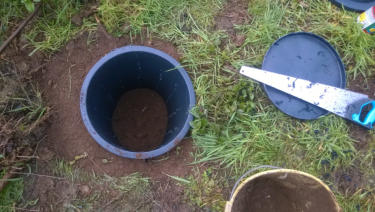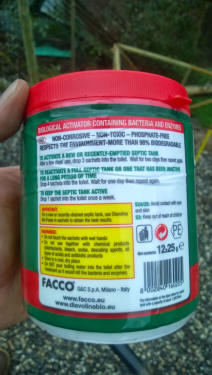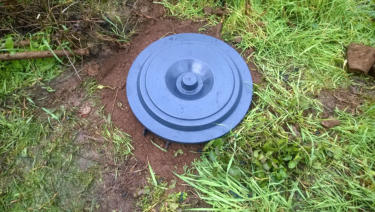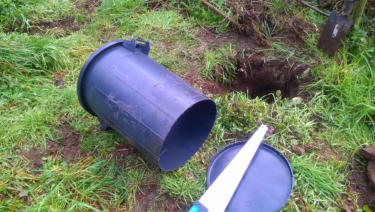






























Project: pet septic tank
We left our lives in England behind us when we bought this house in the summer of 2014 not only to live
in beautiful Tuscany, our favourite holiday destination, but also to make important changes to our lives so
that we could live more in line with our values, reduce our footprint on the planet and start living what we
hope will turn out to be our dream.
As we work our way towards living a more sustainable, self-sufficient lifestyle, we have embarked on a
number of DIY/upcycling/recycling projects.
“Project pet septic tank” came about after we became first-time dog owners and soon started to resent the
number of small plastic sacks of dog waste we were sending to landfill. There had to be a better way of
coping with our puppy’s ‘output’! We also have two cats and although they are much (much) better at
dealing with their waste all by themselves, we do have an indoor litter tray that we were emptying into
landfill on a regular basis.
After stumbling across a related post on composting waste on the internet, the idea of creating our own pet
septic tank was born.
Step 1: Buy a plastic or metal dustbin, with a lid. We used a 70l plastic bin (which copes well with the
output from our now 24kg dog).
Step 2: Dig a hole in the ground so that you can bury the bin, leaving just a couple of inches exposed above
ground.
Step 3: Cut the bottom out of the bin, then drill 10mm holes around the sides of the bin - no higher than the
soil level once buried.
Step 4: Put the bin in the hole in the ground.
Step 5: Fill the bottom of the bin with a 3-4 inches of gravel (to aid drainage).
Step 6: Start filling with animal waste. (Note: if you are going to fill with waste from a cat litter tray, you
must be using biodegradeable litter, such as wood pulp.) We use small plastic scoops (the sort you can buy
for emptying our cat litter trays) to collect the dog waste from the garden and deposit in the bin.
Step 7: After three or four days of collecting animal waste, add some septic tank starter enzymes, as per the
instructions (ours came in plastic sachets, in which case it’s a good idea to add some water to help break
the sachets down).
Step 8: Top up the enzymes once every 4-6 weeks and water a little if it looks a little dry.
We’ve been operating our septic tank for around six months, and the enzymes seem to be keeping up with
production - the tank never gets more than half full. We only ever use dog waste bags when out walking
our dog on public footpaths, so the tank has saved us money as well as having saved many hundreds of
plastic bags from going to landfill.
